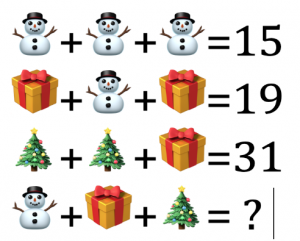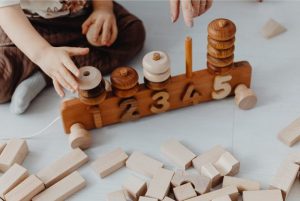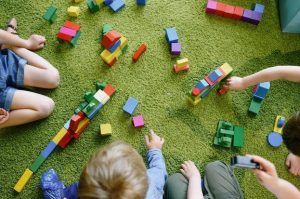
[Pexels]
As the festive season approaches, maintaining focus in the classroom can be challenging for teachers.
Keeping students engaged during this time of year requires a delicate balance between embracing the holiday spirit and upholding academic standards.
With some creativity and planning, you can transform this festive period into an opportunity for engaging and meaningful learning experiences.
Here are some practical tips to transform your lessons into unforgettable Christmas-themed learning experiences.
Stick To Your Schedule

[Pexels]
Children thrive on routine. When you follow your daily classroom planner, they can quickly adapt and know what to expect.
This is especially important during the holiday season when there are so many distractions.
However, you can still change it up a bit by incorporating holiday themes.
For example, you could have a special “Christmas Math“ lesson where students solve problems about Santa’s reindeer or elves.
Some benefits of using this approach include:
- Keeps students on track and focused.
- Provides a sense of stability and predictability.
- It helps students manage their time effectively.
In order for this method to work effectively, post your daily timetable in a visible place, use consistent transitions between activities, and adjust your schedule as needed.
Sticking to your schedule can help your students stay engaged in their learning and enjoy the holiday season.
Play Games With Your Students

Playing games is a great way to engage students of all ages. It can help them learn new concepts, develop critical thinking skills, and have fun.
During the holiday season, there are many games that you can play with your students that have a Christmas theme.
Here are a few ideas:
- Create a word search puzzle with Christmas-related words. Students can compete with each other to find all the words.
- Hide clues around the classroom with math problems on them. Students have to solve the problems to find the clues.
- Create cards with pairs of matching Christmas-related images or words. Students have to flip over the cards and find the matching pairs.
- Write down a list of Christmas-related words or phrases on slips of paper. Have one student draw the word at a time without speaking, and the rest of the class tries to guess what it is.
Playing games is a great way to add fun and excitement to your classroom during the holidays. It can also be a valuable learning tool.
Incorporating games into your lessons can help your students stay engaged and learn new things. Choose games that are appropriate for your students age and ability level, and keep them short and simple.
Reward Good Behaviour

[Pexels]
The holidays are a time for excitement and cheer. But it can also be a time for distractions. With so much going on outside the classroom, keeping students focused on their schoolwork can be challenging. However, rewarding good behaviour can help your students stay on track and maximise their learning opportunities.
There are many different ways to reward good behaviour. You can use simple praise, tangible rewards like stickers or small prizes, or privileges like choosing first for an activity or sitting in the teacher’s chair.
You can also create a class reward system where students earn points for good behaviour and can redeem those points for prizes.
The key to a successful reward system is choosing meaningful rewards for the students.
Variety is also important to prevent students from getting bored with the same gifts. Remember, the goal is to reinforce positive behaviour and create a positive and supportive classroom environment.
Incorporate Variety into Your Teaching

[Pexels]
Students attention spans may be shorter during the holiday season.
Hence, you must vary your teaching methods to keep them engaged and motivated.
By incorporating a diverse range of activities and approaches, you can cater to different learning styles and ensure that all students have the opportunity to succeed.
Hands-on activities, such as creating holiday crafts, experimenting with science projects, or engaging in role-playing exercises, provide a stimulating and interactive learning experience that allows students to apply their knowledge and develop new skills.
Videos, images, and music can also be powerful tools for capturing students’ attention and enhancing their understanding of the material being taught.
Visual learners benefit from visual aids, such as diagrams, charts, and videos, while kinesthetic learners thrive on hands-on activities that involve movement and exploration.
Reading and writing activities cater to those who prefer to learn through text-based information, while auditory learners benefit from discussions, presentations, and music integration.
Create Lessons Relatable to Students

[Pexels]
Consider incorporating relatable elements into your lessons to keep students engaged and motivated during the holiday season.
Social media, music, and ed tech tools can be powerful tools for connecting with students and bringing lessons to life.
At the beginning of lessons, utilize social media platforms to spark curiosity and encourage student participation. Ask students to use social media to research a topic related to the lesson and share their findings with the class.
This approach engages students with familiar technology and promotes collaboration and knowledge sharing.
Incorporate music into your lessons, a universal language that resonates with students of all ages. Create playlists related to the topic, or encourage students to create their own playlists that reflect their understanding of the material. Music can serve as a background for activities, improve transitions, or even be a teaching tool.
Explore the many ed-tech tools to transform your lessons into interactive and engaging experiences. Use online simulations to bring concepts to life, create interactive presentations with presentation tools, or incorporate gamification elements to motivate students.
Add Gamification Into Your Classroom

[Pexels]
Children crave experiences that keep them engaged and motivated in the classroom. You can tap into this innate desire by incorporating gamification techniques into your teaching.
Numerous game-based learning tools are available to Singaporean teachers, making incorporating gamification into your lessons easy.
Educational apps and online platforms offer various engaging activities, such as interactive quizzes, simulations, and challenges, that allow students to earn points and badges.
These game-like elements make learning fun and give students a sense of accomplishment and progress.
Beyond digital tools, you can seamlessly integrate gamification into traditional classroom activities. Create a classroom point system where students earn points for completing tasks, participating in discussions, and demonstrating positive behaviour. These points can be redeemed for rewards, such as extra computer time.
Gamification can also be incorporated into group projects by assigning roles and responsibilities to each team member and establishing clear goals and objectives.
When you track individual and team progress and recognise achievements, you can foster a sense of collaboration and motivate students to contribute actively in class.
Conclusion

[Pexels]
As we approach the festive season, it’s important to remember that the holidays can be a time of distraction for students.
However, by implementing engaging teaching methods and incorporating relatable elements into your lessons, you can motivate your students and make the most of their learning experience during this special time of year.
With some creativity and planning, you can transform the holiday season into an opportunity for engaging and meaningful learning experiences for your students.
